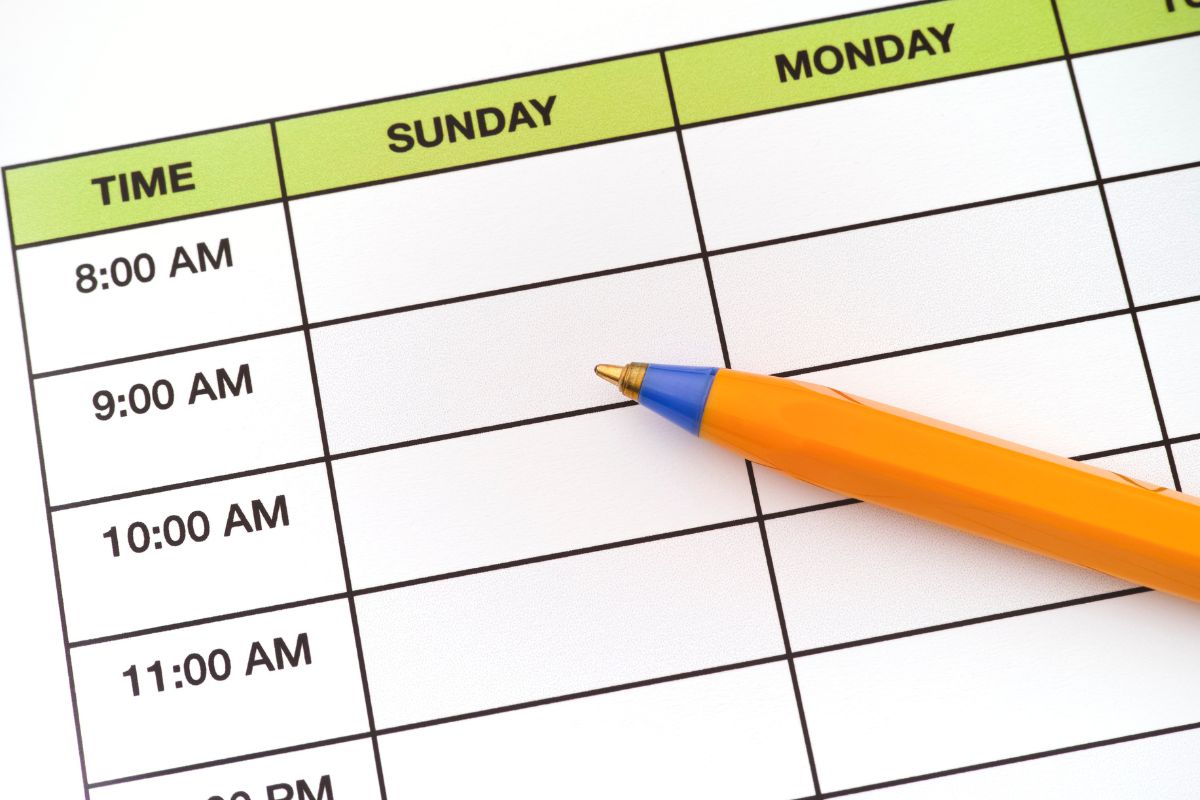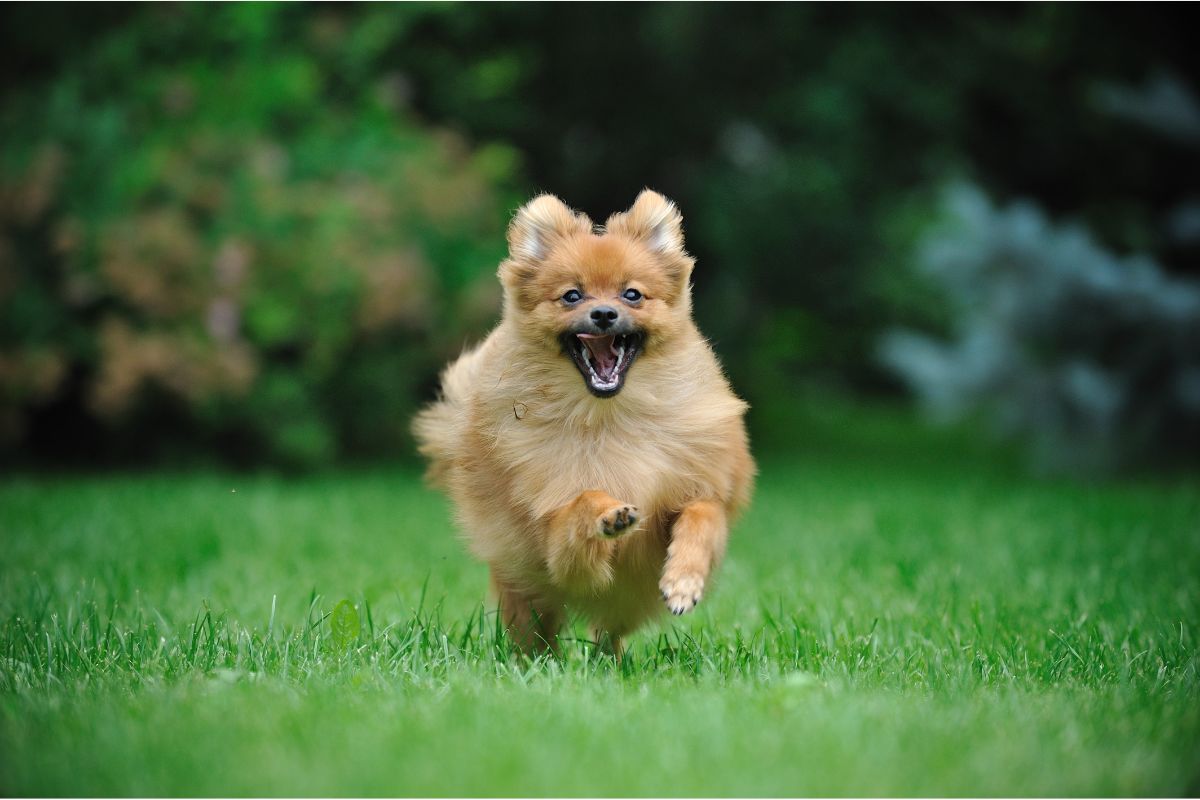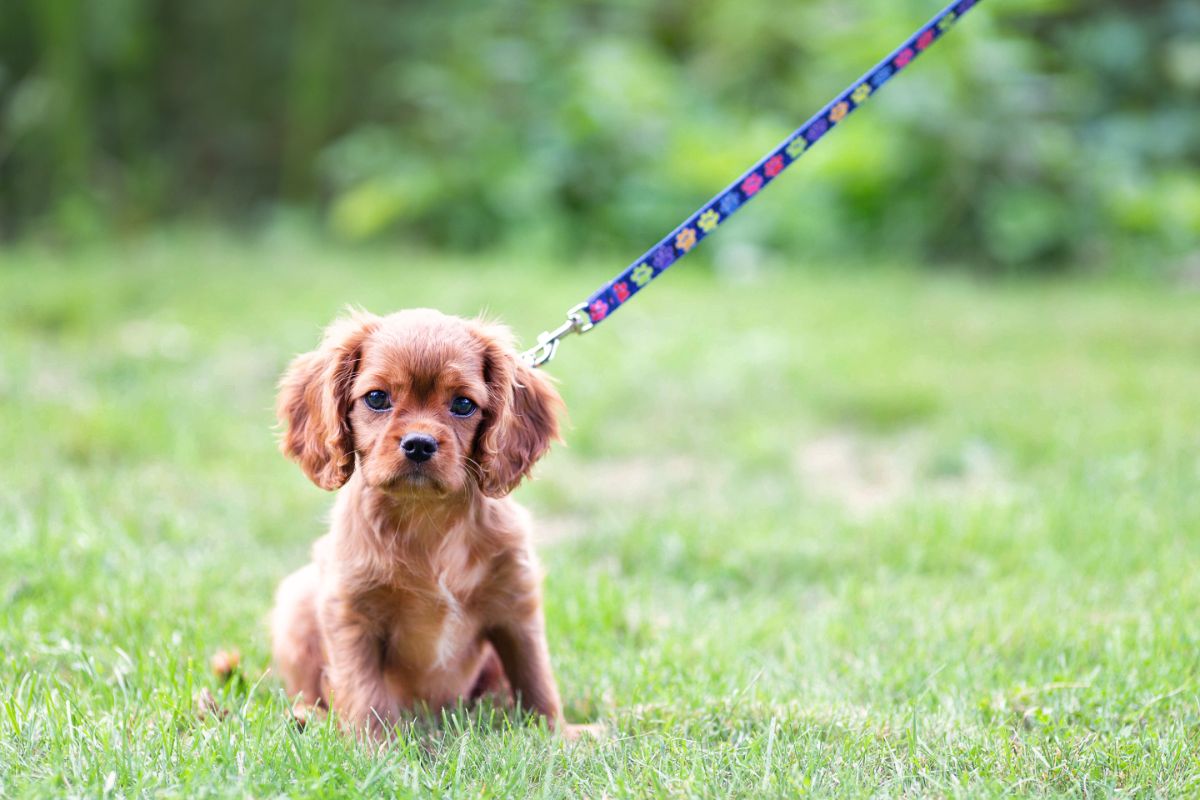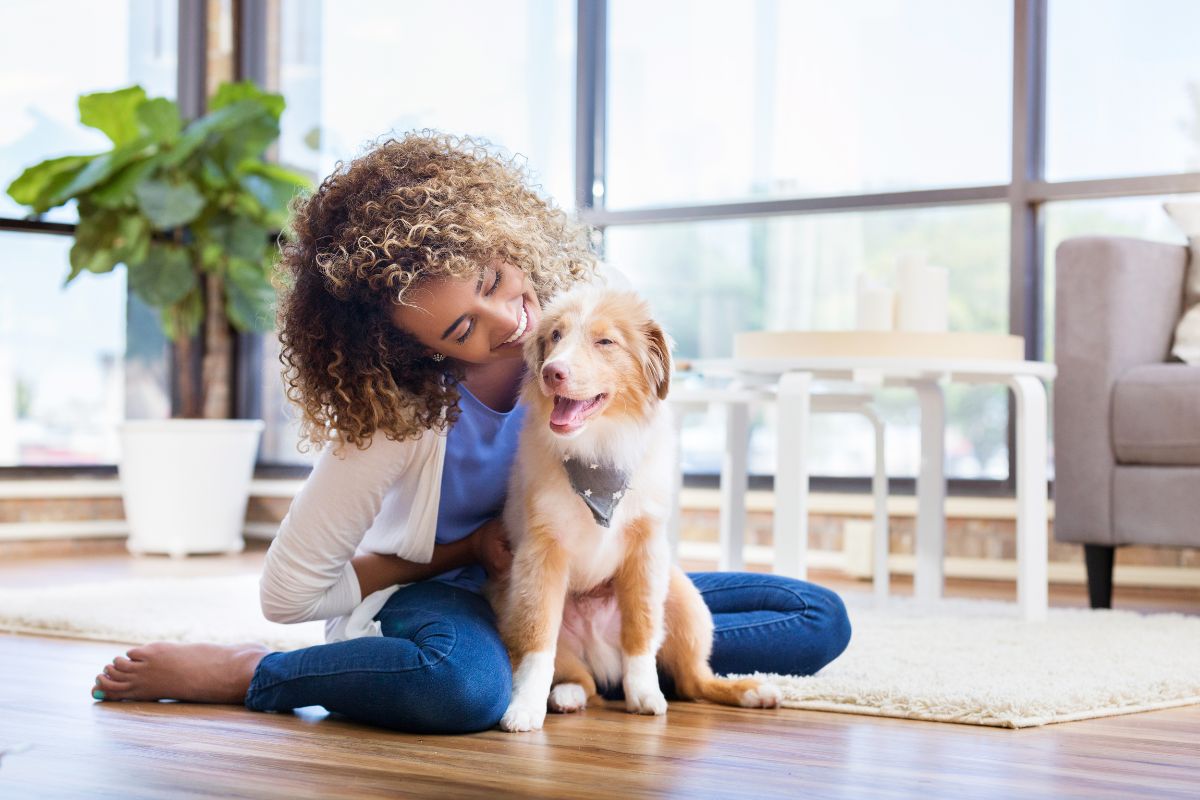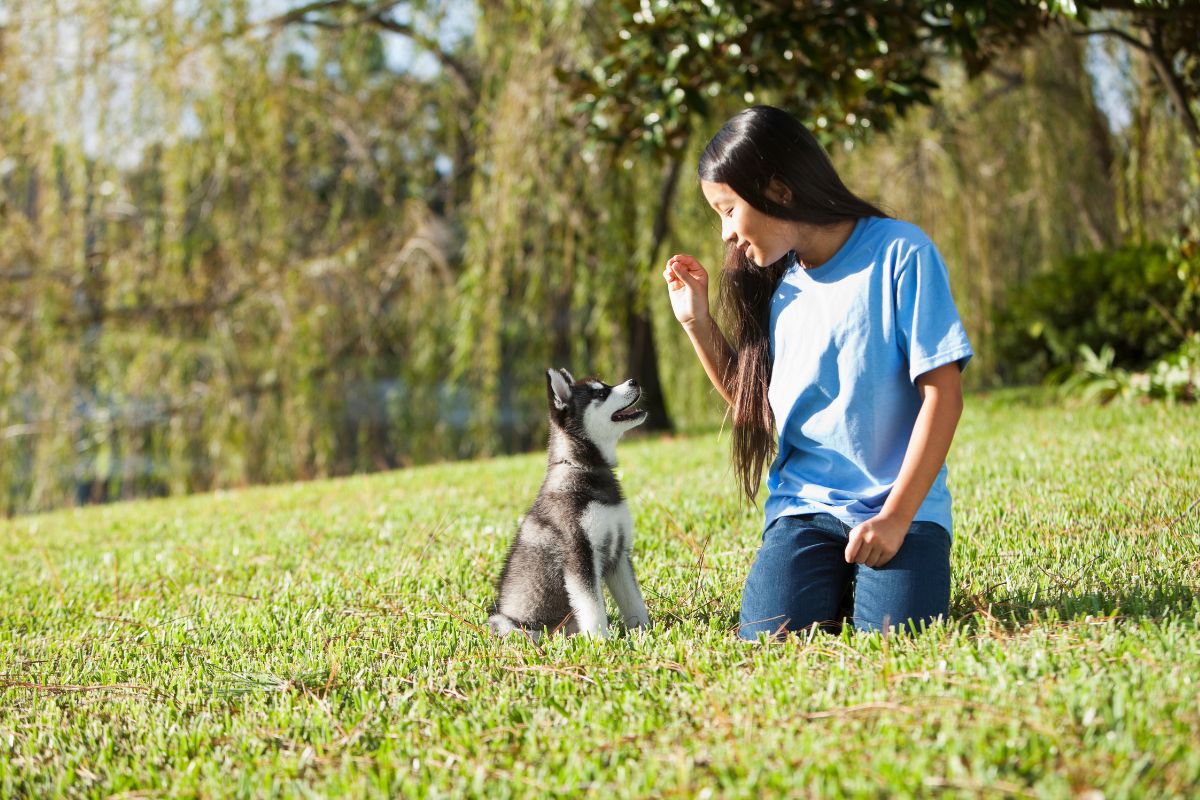Raising a puppy can be one of the most rewarding things you could possibly do, and watching as the small pup grows into a well-trained and well-behaved adult dog is ever so satisfying.

However, raising a puppy is not the easiest task, as there are a number of things that you need to teach them from an early age, in order to give them foundational knowledge that they can take with them as they grow older.
This can make it a very daunting process, as puppies are often more receptive to learning specific things at certain ages.
As such, you might be looking to find out the best order in which to train your puppy, and what you should teach him or her first.
If you want to raise your puppy into a loving and well-behaved adult dog, then you will want to read on down below.
Today, we are going to take you through the best-recommended puppy training schedule, so you can ensure that your puppy receives everything they need to know before adulthood!
How Do You Train A Puppy?
It is important to ensure that you train a puppy while they are still young, as this helps to affirm good behavior that they will then adhere to throughout their lives.
It will help your dog to better understand what behaviors are good and acceptable, which will in turn reward you with a trustworthy companion that you can rely on to stick by your side.
In order to train a puppy, there are a few things that you definitely need to keep in mind during the training journey.
Patience Is Key
Puppy training is not easy, and at times, it can seem like you are getting nowhere with the process, and you might find yourself becoming impatient, or simply giving up on the training process. The key is to maintain consistency and persevere with training in a patient manner!
If your puppy is having trouble responding to the training, make sure to be gentle with them, and try it again later. A puppy is still young, and learning what’s expected of them, so it’s normal for them to make a few mistakes.
Don’t force your puppy to train when they don’t want to. If they don’t pick up on something right away, give them some time away from the activity before trying again.
Repetition
In order to help your puppy to memorize everything you teach them, you will want to make sure to do the training activities a fair few times.
Once your puppy has gotten to grips with certain behavior, you will want to repeat the training activities to really affirm their importance, and help to make the behaviors into second nature for the puppy.
Make sure that when you do carry out training sessions with your puppy, they are short and sweet, and that you reward your puppy afterward. This helps to ensure that the puppy remains enthusiastic about training, as they will know that they will get something exciting at the end for their good behavior.
Make Use Of Food
Puppies love their food (some breeds more than others), and when they know you are going to give them something to eat, they will give you their undivided attention. This period, when you have the puppy’s full focus is the best time in which to train them.
Not only do you have the puppy’s full attention, but the puppy will also recognize that, when they behave well, they will be rewarded.
Making use of food helps you to develop a strong bond with your puppy, as they will recognize you as a trustworthy authority.
How To Train Your Puppy At 8 To 10 Weeks Old
When your puppy is still very young, this is the key point to help teach them various things like their name, different commands, and good manners, to act as foundational groundwork.
Get Started With Basic Commands
Two of the most important commands to use with any dog are ‘Sit’, and ‘Come’. These two commands are incredibly clear, and the responses they elicit are very simple, so they are perfect for teaching at this very young age.
These commands are also great because they help you to establish control over the puppy, so that, whenever the puppy does something undesirable, you can say ‘Sit’ to get them to stop.
The best way to introduce these commands to your puppy is to use food. Take some of your puppy’s favorite treats in your hand, and allow the puppy to smell them.
From here, slowly pull the treats away by stepping back while saying ‘Come’. When they respond to your command, make sure to reward them with the treats!
When it comes to teaching the ‘Sit’ command, you will want to hold a few treats in your hand and hold them just over the puppy’s head, just out of reach, but close enough for them to smell and recognize the treats.
From here, command the puppy to ‘sit’, and once you notice them sitting, reinforce the behavior by giving them the treats, and saying something positive like “Good boy!”.
Get Your Puppy Used To Others
It is also crucial to ensure that your puppy socializes from a young age. However, you don’t want to overwhelm the puppy, so make sure to only introduce them to a few people at a time.
Invite a close friend or family member over to visit the puppy, and allow the puppy to interact however they please.
It can be good to invite a number of friends or family members over a period of time so that your puppy can get used to meeting other people and recognize it as a positive experience.
Introduce Schedules
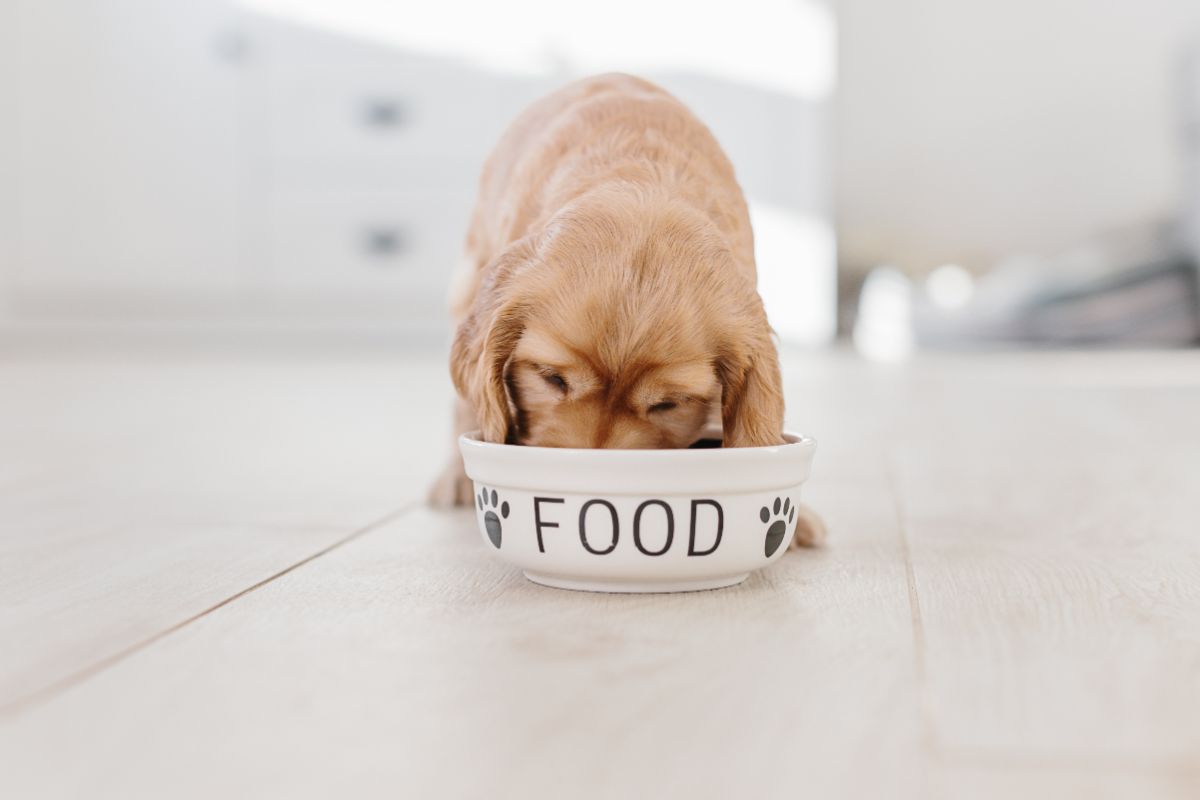
In order for your dog to settle in as a member of the family, it is important to get them used to the daily schedules that occur within the household. Help the puppy to recognize specific periods of the day, and what occurs within them.
Try to keep breakfast and dinner consistent to a specific time each day, so that the puppy can recognize that certain things happen at particular times of the day.
Help Your Puppy To Recognize Its Name
Once you have decided on a name for your puppy, you will want to help them to recognize that name as their own. To this end, you will want to ensure that you make frequent use of the name throughout the day, and throughout your interactions with the puppy.
Whenever you say their name, make sure to establish strong eye contact with your puppy, so that they will begin to associate their name with your attention.
Over time, you should notice your puppy beginning to approach you, or beginning to react with excitement upon hearing their name. Be sure to reward this with a treat, or with words of encouragement.
The important thing at this stage is to focus on eye contact, as this helps to build the bond between you and your puppy very strongly.
Potty Train Your Puppy
No one wants to get involved with potty training, but it is important to get started on it from a very early age with a puppy, as it helps to ensure that it knows when and where to go to relieve itself, while also helping you to maintain a tidy home.
In order to do this, you will need to understand how often your puppy needs to go for a potty break, and how long they can hold it between breaks.
A good way to figure this out is to take your dog’s age in months and divide that into half to get a sense of how long they can go between potty breaks.
Try to keep the potty breaks on schedule, so that the puppy can understand the importance of holding it in between potty breaks, while also helping them to understand that only specific areas of the home are okay to potty in!
Whenever your puppy potties in the right spot, make sure to reward them with a treat, or with some encouraging words.
Crate Training
Crate training is very useful because it helps to establish the crate as a safe space for the puppy to crawl into if it finds itself overwhelmed.
Help your puppy to understand that the crate is its own space and a place to be enjoyed. This is important for the puppy to establish its own boundaries and this can also be used as an opportunity to teach your puppy impulse control.
When your puppy is in its crate, and the door is closed, open it up, but ask that they ‘Sit’ for a few seconds until you tell them that they can leave.
This helps to keep the puppy from bounding out instantly, which helps them to subconsciously control their impulses.
Promote Healthy Chewing Behaviors
When a puppy is still young, it will naturally be drawn to chewing on things as it explores the world with its mouth and will go through a period of teething – just like babies do.
Make sure to provide the puppy with plenty of chew toys to express themselves with and to use their energy up on.
You will want to help your puppy to recognize what is a chew toy, and what isn’t. Be sure to be firm with your puppy when you find them chewing on furniture, or anything inappropriate, and draw their attention to a chew toy, before rewarding them.
How To Train Your Puppy At 10 To 12 Weeks Old
More Commands!
Now that your puppy has a firm grasp on commands like ‘Sit’, and ‘Come’, you will want to start introducing a number of extra commands that can help to establish a connection between you two while promoting obedience.
‘Down’ is a very important command at this stage, as it helps you to establish control over your puppy when you notice it misbehaving.
‘Stay’ is also great for further reinforcing impulse control, which helps your puppy to remain well-behaved even in exciting or potentially overwhelming situations.
Introduce The Leash
Of course, as your puppy grows older, you are going to start taking them on walks. So, at this age, you will want to introduce them to the leash, and possibly even the harness.
The best way to do this is to simply attach the leash or harness to your puppy while they explore the home so that they can get used to the feel of it. Be sure to supervise the puppy while this is happening and give them a treat to show them that it’s not a bad experience.
Keep Socializing
Around the age of 10 to 12 weeks, your puppy will be able to be introduced to more people without becoming overwhelmed. Keep socializing your puppy by inviting over friends to interact with it.
The puppy will love the extra attention, and it will help them to open up more around others.
Feel free to invite slightly larger numbers of friends over at a time, but be sure not to force your puppy to interact if they don’t feel like it.
A young puppy may find such attention still very overwhelming, so it is important to provide them a space they can retreat to when overwhelmed, such as their crate.
You might also want to invite your friends to bring over their dogs to interact with your puppy, in a controlled environment.
You can also start to get your puppy used to the sound of busier environments, such as cafes, or to the sound of traffic, by playing recordings online.
Threshold Training
Another way to help train your dogs to control their impulses is to engage them in threshold training.
In order to do this, have your puppy sit in the doorframe of a room, just outside of it, and command them to ‘Stay’. When ready, encourage them to enter the room in a calm manner. When they do this, be sure to reward them with a treat, and some encouraging words.
How To Train Your Puppy At 3 To 4 Months Old
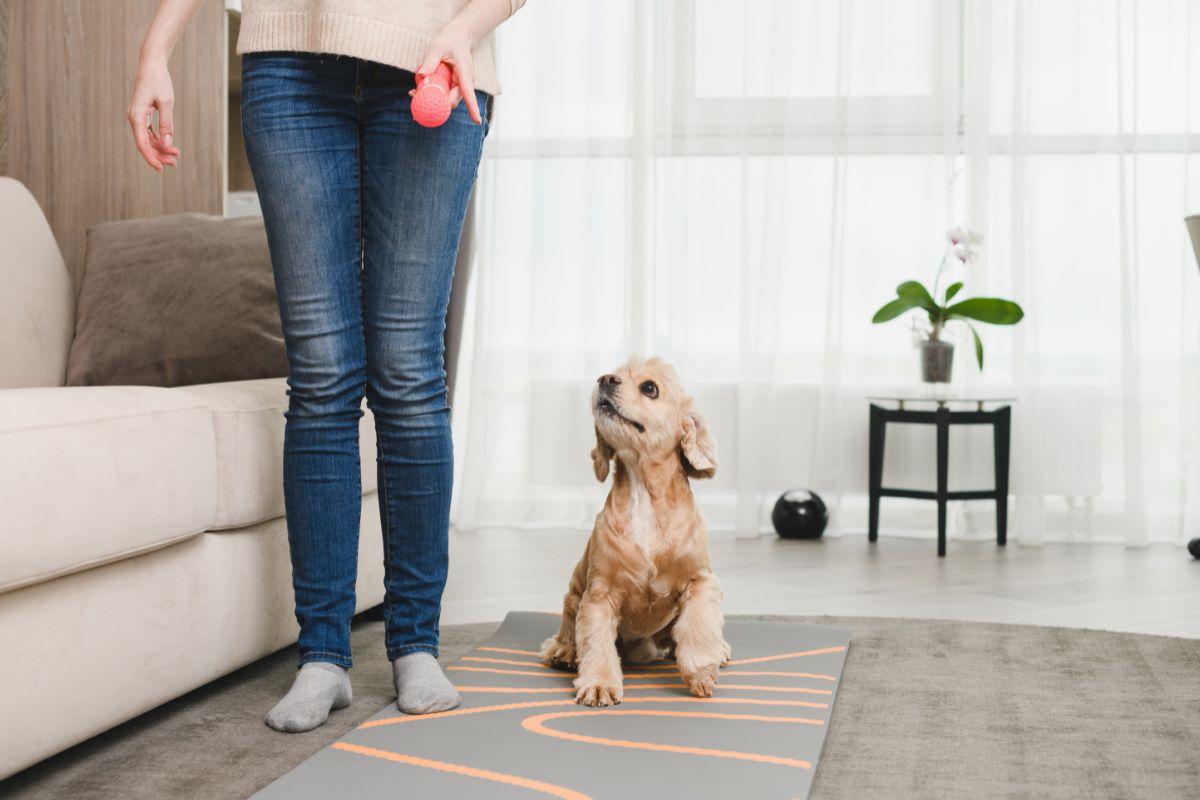
Command Combinations
At this slightly more advanced age, your puppy should have a very firm grasp on the most important commands that you would use. From here, you can begin combining commands to communicate more specific things.
For instance, you might say ‘Sit’, ‘Stay’, and ‘Come’ in sequence, to establish some further impulse control training.
Further Socializing
At this point, you and your puppy should be enjoying some fun walks together, and you might want to push them a little further.
On these walks, you may encounter new people and new dogs, and if your dog shows curiosity, allow them to explore and recognize the positive aspects of socializing.
If your dog does not want to interact with another dog or another person, make sure not to force them to.
Teach Your Dog To Heel
As your dog walks outside of the house with you, you will want them to stick close to your side, and keep pace with you. The ‘Heel’ command is crucial to this end, as it encourages the puppy to return its focus to you while also maintaining its calm.
This helps you to be sure that, while out and about, you will be able to rein your dog in and keep it under control, even when excited.
How To Train Your Puppy At 4 To 6 Months Old
Fewer Food Rewards
In order to help your puppy to behave well, you will want to ensure that it is not only motivated by the prospect of being given treats but also by the prospect of making you happy.
This will reinforce for your puppy that good behaviors are worth it just for the satisfaction of doing the right thing.
Don’t completely withdraw food as a reward for good behavior, but instead try to provide food for every 3 or 4 commands followed correctly.
Walk Further
At this age, you will also want to start walking your pup a little bit further each time.
This allows your puppy to gain more confidence about exploring the wider world, while also giving you ample opportunity to reinforce the ‘Heel’ command while allowing the dog to fully acclimate to the leash and the harness.
Practice Commands Outdoors
Up until now, much of your command training with your puppy will have taken place in the controlled environment of the home. You can help reinforce the importance of these commands, to your pup, by practicing them outdoors, in a less controlled environment.
This will help your puppy to strengthen their focus, while also helping them to recognize your voice across larger distances, and amidst more chaotic noise.
How To Train Your Puppy At 6 Months To 1 Year Old
Reinforce Commands
Even as your puppy gets older, and reaches adulthood, be sure to keep reinforcing the commands, and even introduce a few new ones as necessary.
In order to strengthen the commands, and help your puppy to recognize their importance, encourage them to respond to them for longer periods of time, or provide the commands over greater distances.
For instance, provide your puppy the ‘Come’ command from a great distance across a field!
Maintain A Sense Of Structure
Now that you have established the numerous ground rules with your puppy, it is important to keep them consistent, in order to help solidify the positive behaviors.
If you have set up a structure within the home for the puppy to follow, make sure to keep it consistent!
Find out how to teach your puppy not to counter-surf here.
To Wrap Up
There you have it! Though the prospect of raising a puppy can seem like a very daunting one, we hope that this guide has helped to make it much clearer, and much easier to do so.
Make sure to target key behaviors at key ages, to ensure that your puppy receives adequate training that helps them to be healthy and well-behaved!
- How To Teach Your Puppy Their Name Easily! - July 18, 2023
- Is Your Puppy Counter Surfing? Find Out How To Stop It! - July 18, 2023
- How To Train Your Puppy For Car Rides: Everything You Need To Know - July 18, 2023




